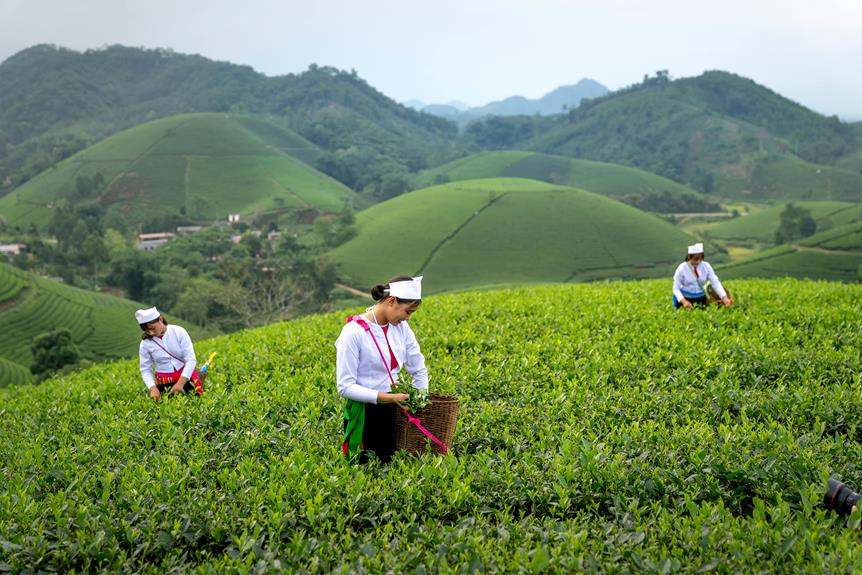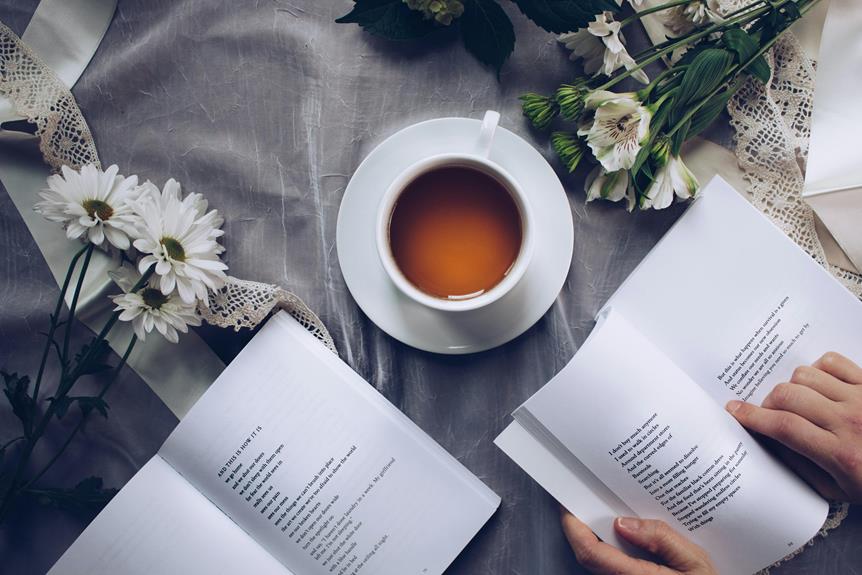

If you’ve ever found yourself torn between hojicha and sencha, you’re not alone! Understanding the differences between these two popular Japanese teas can greatly enhance your
In this article, we’ll explore 9 essential differences to help you decide which
A Quick Overview: Hojicha vs Sencha
Before diving into the details, let’s set the stage. Hojicha is a roasted green
Color Differences: Hojicha vs Sencha
One of the most noticeable differences when comparing hojicha vs sencha is their color. Sencha, being a steamed
On the flip side, hojicha’s reddish-brown color is a result of the roasting process, which caramelizes the leaves and gives them their unique appearance. The brewed liquid of sencha ranges from pale green to yellowish, while hojicha presents a rich dark amber or reddish-brown liquor. This striking contrast in colors not only showcases their unique processing methods but also sets the stage for the different flavor profiles each
Leaf Variations: Hojicha vs Sencha
As you dig deeper into the world of hojicha vs sencha, it’s crucial to note the differences in their leaf types. Hojicha is crafted by roasting leaves from sencha or bancha, leading to a unique reddish-brown hue. The leaves used for hojicha are typically larger and coarser compared to the delicate young leaves favored for sencha production.
Sencha, on the other hand, is made from the tender, top leaves of the
Appearance and Flavor Contrasts: Hojicha vs Sencha
When it comes to flavor, the contrasts between hojicha vs sencha are striking. Hojicha, with its roasted, nutty, and caramel-like flavor profile, offers a deeper and more complex taste experience. The roasting process reduces bitterness and astringency, resulting in a smoother, mellower drinking experience.
In contrast, sencha presents a fresh, grassy, and umami-rich taste that can be both sweet and savory. Its balanced flavor profile is complemented by a vibrant aroma that evokes feelings of freshness and vitality. The appearance of hojicha, with its brownish hue and coarser leaves, signals a completely different sensory experience compared to the thin, curled, and vibrant green sencha leaves.
In summary, whether you prefer the robust, roasted notes of hojicha or the refreshing, grassy flavors of sencha, both teas provide unique sensory experiences that cater to different palates.
Caffeine Content: Hojicha vs Sencha
Caffeine content is another essential factor to consider in the hojicha vs sencha debate. If you’re sensitive to caffeine or looking for a milder option, hojicha might be the better choice for you. A typical cup of hojicha contains around 7 mg of caffeine, while sencha can range from 30 to 60 mg per cup.
This disparity arises from the different processing methods used for each
Conversely, if you’re seeking a more stimulating effect or a caffeine boost, sencha is the way to go. Understanding these caffeine disparities can guide your
Brewing Techniques: Hojicha vs Sencha
When it comes to brewing, hojicha vs sencha requires different techniques to achieve the best flavor profiles. Sencha is best brewed with cooler water—around 175°F (80°C)—and steeped for 30 seconds to 1 minute. This method allows you to extract the delicate flavors without overwhelming bitterness.
On the other hand, hojicha can handle freshly boiled water and benefits from a longer steep time of up to 2 minutes. This higher temperature helps bring out the robust roasted notes that define hojicha’s taste. While sencha can be steeped multiple times, hojicha often loses its intensity after a few resteeps due to the nature of its roasted leaves.
Understanding these brewing techniques is essential for maximizing your enjoyment of each
Cultivation Variances: Hojicha vs Sencha
The cultivation methods for hojicha and sencha also differ significantly. Hojicha is made by roasting leaves from sencha or bancha, while sencha is made from young leaves that are steamed and rolled. This fundamental difference affects the flavor, aroma, and overall experience of each
In sencha cultivation, the leaves are exposed to sunlight, enhancing their flavor profile and increasing their chlorophyll content. On the contrary, hojicha can use older leaves and stems, which contribute to its unique taste. The roasting process involved in making hojicha results in reduced catechins and caffeine levels compared to sencha, altering the health benefits of the final product.
These cultivation variances play a crucial role in defining the characteristics and flavors of hojicha and sencha, catering to diverse preferences among
Price Comparison: Hojicha vs Sencha
Let’s talk about price. Generally, hojicha is more affordable than sencha, with prices typically ranging from $10 to $20 per 100g. This is partly due to the lower labor intensity involved in the roasting process for hojicha.
In contrast, high-quality sencha can range from $15 to $30 per 100g, with premium varieties reaching even higher prices. Factors such as region, cultivar, and processing techniques play a role in determining the price of both teas. Additionally, certifications like organic status can also affect pricing.
Understanding the price differences can help you make an informed decision based on your budget and desired
Finding Your Ideal Tea : Hojicha vs Sencha
So, how do you find your ideal
On the other hand, if you prefer a more traditional green
Consider your desired caffeine intake, flavor preferences, and overall health goals when deciding between these two teas. Whether you’re drawn to the nutty, comforting flavor of hojicha or the fresh, grassy taste of sencha, understanding their differences will help you make the right choice.
Conclusion
In the end, whether you lean towards the bold roasted notes of hojicha or the refreshing grassy profile of sencha, both teas offer unique experiences that cater to different tastes and preferences. By understanding the differences in color, flavor, caffeine content, brewing techniques, cultivation, and price, you can confidently choose the
Experiment with both hojicha and sencha to discover which one delights your taste buds the most. Cheers to your






Konnichiwa! (Hello!) I'm Pat Tokuyama, a Japanese tofu cookbook author, who travels for music, food, and adventure. If you like Japanese tea, checkout some of the newestorganic japanese tea, matcha bowls and noren and more!
** Curious about the Plant Based Japanese Cooking Club? ** Learn more here!